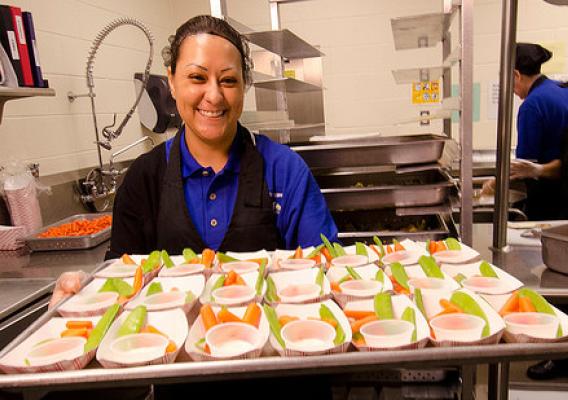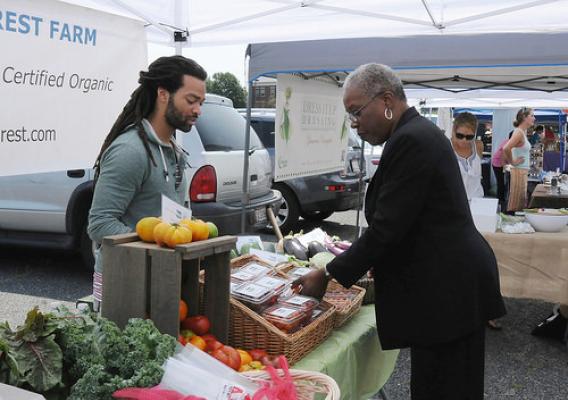Earlier this month, USDA celebrated National Farmers Market Week to highlight the healthy offerings they provide American families. The department invests in farmers markets in a myriad of ways – from helping farmers develop their products for markets, to enriching children’s bodies and minds through the “farm to school” program. In fact, there are more than 8,000 farmers markets listed in USDA’s National Farmers Market Directory, and more than 5,000 farm stands and farmers markets across the nation are accepting SNAP benefits.
During the month, I had a chance to speak with Lt. Col. Eric Smith, commander of Fort Meade’s (Md.) Headquarters Command Battalion. We discussed USDA’s partnership with the Department of Defense and supporting the Healthy Base Initiative through FNS programs. DoD’s Healthy Base Initiative works to improve the health and wellness of service members and their families by reducing obesity and decreasing tobacco use. Currently, 14 military installations participate in a pilot to create an environment that promotes healthy lifestyles. Fort Meade is one of them.









